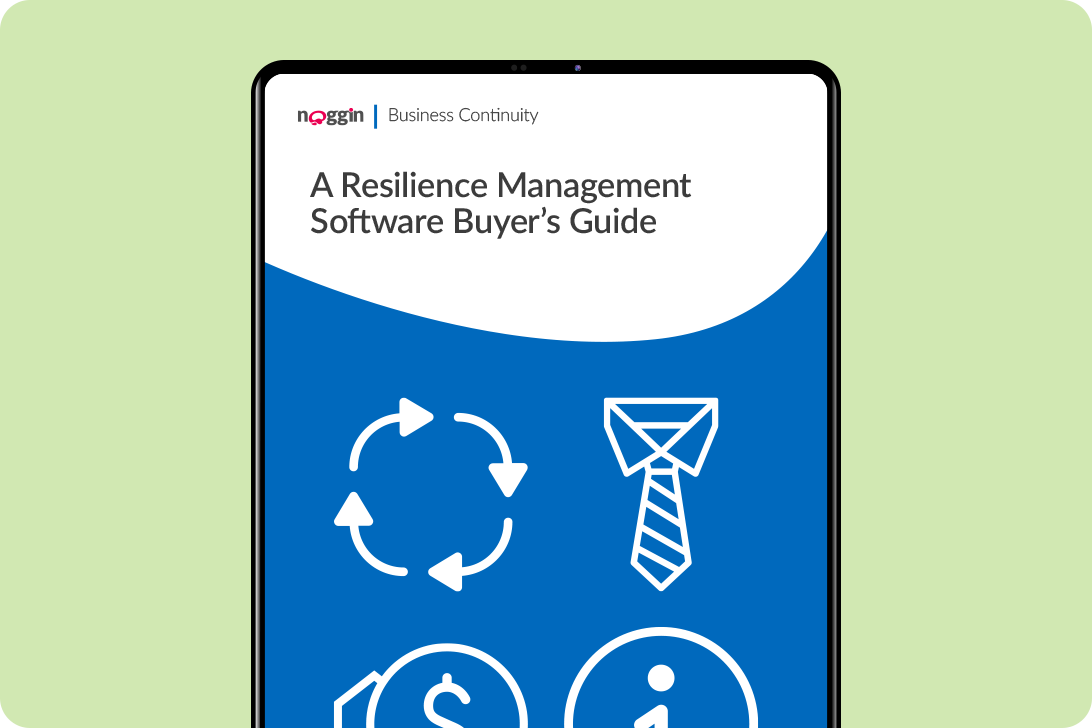Organizations today face a litany of challenges to resilience, with the popularity of the hybrid workforce fragmenting incident response, as well. What can be done to bet...
Request a Demo
Fill in the form below and we will contact you shortly to organised your personalised demonstration of the Noggin platform.
Meet Noggin
An integrated resilience workspace that seamlessly integrates 10 core solutions into one, easy-to-use software platform.
The Noggin Platform
The world's leading integrated resilience workspace for risk and business continuity management, operational resilience, incident & crisis management, and security & safety operations.
Industries
Explore Noggin's integrated resilience software, purpose-built for any industry.
The Noggin Blog
- Home
- crisis management
crisis management
Latest Articles
4 Digital Capabilities to Consider in Business Continuity Planning Software
Companies confronting an unprecedented era of compounding, consecutive, and concurrent crises.
The question then turns to, what business continuity...
Mandatory Cyberattack Reporting: A Harbinger of the Future?
As cyberattacks increase will regulators demand mandatory cyberattack reporting?
In one sector, they likely will.
Which one? Read on to find out.
What is Crisis Communication? Crisis Communication Strategies
When crisis response goes awry, poor communication is often at fault. Poor communication typically takes any of the following forms:
- Withholding...
5 Reasons to Upgrade Your Emergency Management Platform
Organizations today face a litany of challenges to resilience, with the popularity of the hybrid workforce fragmenting incident response, as well....
Operational Risk Management: Overview & Guide
What’s one of the most significant risks businesses face today? That would be operational risk.
Don’t think so? Consider the fates of Enron,...
The Benefits of Operational Risk Management
Everyone knows that running a business involves risk. But not all risks are created equal.
Business leaders will encounter certain risks that are...
6 Types of Workplace Hazards
Workplace injuries and illnesses don’t come out of the blue. They’re often the product of workplace hazards that haven’t been successfully...
BCM Lifecyle: 6 Stages of the Business Continuity Lifecycle
In the age of constant crisis, companies understand the importance of business continuity in continuing the delivery of products or services...
What Clients Should Know about Effective Governance of Operational Resilience (OpRes)
Interest in operational resilience has no doubt boomed among your clients, whether they’re in a heavily regulated industry or not. But an OpRes...
Strategies to Protect Critical Infrastructure in Times of Heightened Threat
Attacks on critical infrastructure assets are on the rise. And now, national publics are concerned. A staggering 81% of U.S. residents are worried...
6 Ways Business Continuity Management Software Can Prepare Your Organization for Any Disruption
Nowadays, disruption is a matter of when not if.
What is Crisis Communication? Crisis Communication Strategies
When crisis response goes awry, poor communication is often at fault. Poor communication typically takes any of the following forms:
- Withholding...
7 Attributes of a Crisis Management Capability
Crises are growing in kind, cost, and intensity. Which means that getting your crisis management capability off the ground has never been more...
The 8 Do’s and Don’ts of Crisis Communication
Crisis communication is easy to ignore when things go well but hard to ignore when things go wrong.
Indeed, some of the crises we remember best are...
6 Essential Elements of a Crisis Communication Plan
The crises we remember best are the communication disasters; flailing before the public, the hapless CEO grilled by relentless reporters and...
Getting Started with Business Continuity Testing
75% of businesses without a business continuity plan (BCP) fail three years after disaster. But in 2024, an untested BCP won’t offer much in the way...
Digital Strategies to Manage Third-Party Risk
It’s become clear, third-party risk is a huge deal. Companies are even outsourcing their critical functions especially to cloud-service providers...
What Clients Need to Implement ISO 22398
As clients well know, ISO 22398 lays out the procedures necessary for planning, implementing, managing, evaluating, reporting, and improving crisis...
What’s Going on with Collaboration in Crisis Management?
Covid proved a wake-up call for most organizations. They belatedly realized the importance of having an effective crisis management capability. But...
Crisis Communication: Top Client Challenges
Clients can intuit that business crises often become infamous when communication with stakeholders goes awry. But to get their crisis communication...
Seven Types of Crisis that Require a Business Continuity Plan
Business continuity is all about an organization’s level of readiness to maintain its critical functions in the event of a crisis or disruption. What...
What You Need to Know about ISO 22361: Crisis Management Standard
Following on the heels of previous resilience management standards, last year, the International Organization for Standardization released its...
The Top Four Crises of the Last 12 Months
To those who thought bank runs belonged to the 1920s and 30s, this year’s top crisis, the most significant of the last twelve months, ought to...




